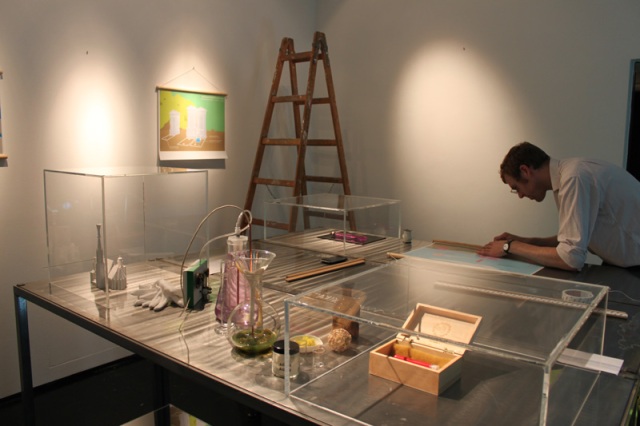How might the city of Vienna encourage its citizens to generate new sustainable services and initiatives? How might the Viennese citizens create new social structures and dynamics if they were given the means to harness the emergent technological developments of synthetic biology*, genetic engineering and microbial ecology ** ?
The tension between the climate change debates, the break down of the capitalist system and the lack of social cohesion between citizens is the context within which the project sits. In this alternative future, we have focused on the future implications for the city if its key systems were to be shut down and in particular how citizens might survive, adapt and be ready for change.
In our scenarios the State has given maximum authority to the Viennese by putting them under obligation to live in a self-sustaining way. It encourages them to live autonomously and rely on naturally existing systems, in particular, introducing grass root movements such as permaculture***into the public service infrastructure.
The four case studies exhibited here offer a glimpse into the many ways the Viennese citizens have evolved their way of life and created their own sustainable services and initiatives.
*Synthetic biology is the merging of biology and engineering and focuses on the design and build of novel biological functions and systems.
**Permaculture is an approach to designing human settlements and agricultural systems that mimic the relationships found in natural ecologies.
***Microbial ecology is the relationship of microorganisms with one another and with their environment. It concerns the three major domains of life — Eukaryota, Archaea, and Bacteria — as well as viruses.
———
ÜBER CITIZEN EVOLUTION
Wie könnte die Stadt Wien ihre Bürger dazu animieren, nachhaltige Dienstleistungen und Initiativen zu schaffen? Könnten sich neue Sozialstrukturen und Dynamiken entwickeln, wenn den Bürgern freier Zugang zu den neuen technologischen Entwicklungen in synthetischer Biologie*, Gentechnik und mikrobischer Ökologie** ermöglicht wird?
Das Spannungsfeld zwischen der Klimadebatte, dem Niedergang des kapitalistischen Systems und dem Mangel an sozialem Zusammenhalt unter den Bürgern bildet den Kontext des Projekts. In dieser Zukunftsvision gilt unser Hauptaugenmerk den Implikationen, die ein Zusammenbrechen der Schlüsselsysteme für die Stadt hätte, und hier im Besonderen, wie die Einwohner überleben, sich anpassen und dem Wandel entsprechen können.
In unseren Szenarien verleiht der Staat den Wienern maximale Autorität, indem er sie dazu verpflichtet, autark zu leben. Sie sind gefordert, sich existierender Systeme zu bedienen und Graswurzelbewegungen wie etwa die Permakultur*** in die öffentliche Infrastruktur zu übernehmen.
Die vier hier ausgestellten Fallstudien zeigen, wie die Wiener ihre Lebensweise anpassen und spezifische nachhaltige Dienstleistungen und Initiativen entwickeln.
* Synthetische Biologie ist die Verschmelzung von Biologie und Technik und beschäftigt sich mit dem Erdenken und Errichten neuer biologischer Funktionen und Systeme.
** Mikrobische Ökologie ist die Beziehung von Mikroorganismen untereinander und mit ihrer Umwelt. Sie betrifft die drei wichtigsten Bereiche des Lebens – Eukaryoten, Archaeen und Bakterien – sowie Viren.
*** Permakultur bezeichnet das Gestalten von menschlichen Siedlungen und landwirtschaftlichen Systemen, die natürliche Ökosysteme nachahmen.















